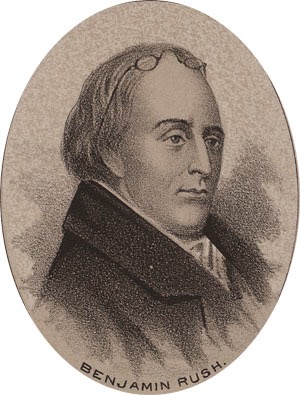Reposted from The Medicine Gardener (themedicinegardener.com)
Gardens.
Dazzling treasures of art. Libraries full with stories of bewildering
challenges. Monuments of history. Protectors of diversity. Habitat for
the endangered. Medicine chests for the meek. Where sustenance is
sustained. Where friends are made and lost, love proposed and declined,
and where human and plant are destined to consume each other. A garden
is not just a garden.
When I left the United Kingdom in pursuit of
my career in the United States (it was time to come home), I landed in
Philadelphia. Generations of my family, from both sides, have harbored
on the shores of the Delaware River, so it was the only logical starting
place for a 'new' woman in the 'new' world.
Philadelphia itself
is a land of 'firsts', being that it was the first capital of the United
States and served as the teapot for both America's democracy and modern
medicine. It is also home to the first and only medical museum in the
country, The Mutter Museum
at the College of Physicians of Philadelphia, which houses not only the
mysteries (var. grotesque) of medical science, but also the Benjamin Rush Medicinal Plant Garden.
The Benjamin Rush Medicinal Plant Garden. Photo courtesy of The Mutter Museum.
My grandfather, Marshall Beck Guthrie,
was a member to the College of Physicians. My grandmother, Louise
Calbert Guthrie, was a docent. In carrying out a family tradition, I
arrived at the doors of the museum just in time to volunteer to revamp
and enliven this medicinal plant haven in the heart of the city of
brotherly love. Little did I know I would be meeting a kindred spirit
within those walls.
So wait, back up. Benjamin who? Benjamin Rush
(1745 - 1813) was an extraordinary physician, writer, teacher,
humanitarian, politician and one of the lesser known signatories of the
Declaration of Independence. Although not a big fan of our beloved
General Washington and arguably disliked by the iconic Benjamin Franklin
and John Adams, Benjamin Rush was favored in the public's eye as a
physician 'for the people'. He was a social activist, abolitionist, and
advocate for scientific education for the masses, including women. He
held public medical clinics for the poor...and clearly was a fan of
medicinal plants and medicinal plant gardens. These were just a few of
his virtues (for a full account of his Curriculum Vitae click here), the knowledge of which made me feel at home in his tribute garden at the College of Physicians.
by Ole Erekson, Engraver, c1876, Library of Congress
According to the Mutter Museum, Benjamin Rush
was one of the founders of the College of Physicians itself and urged
his colleagues to maintain a medicinal plant garden “as a natural and
cooperative way to replenish their medicine chests”. The College of
Physicians didn’t actually plant the Benjamin Rush Medicinal Plant
Garden until 1937, many years after Benjamin Rush. By this time America
had already seen the synthesis of acetylsalicylic acid (better known as
Aspirin®) from White Willow (Salix alba), as well as repeal of the
Prohibition and the beginning of the war on synthesized narcotics. It
was during the early days of the pharmaceutical ‘golden era’ (click here
for an interesting recount of the Emergence of Pharmaceutical Science
and Industry) that this garden actually took form (the irony of which I
find slightly amusing). The garden itself is home to over 60 species,
both native and foreign, that have historical and contemporary medicinal
significance. Not to mention it holds a space of peace for busy
downtown Philadelphians on their lunch breaks.
So you see, a garden is not just a garden...
This story is a bit of a throwback as this work was accomplished in 2010. That being said, I haven't had the platform of sharing it with you all until now. Here is a snapshot of the work we accomplished that season. I highly encourage a visit to the Mutter Museum at the College of Physicians should you ever find yourself in the lively heart of historical America.
I
find many parallels between my story within the medical and
professional world and the story of Benjamin Rush. Although on very
different paths (I'm not a big fan of blood-letting), we both studied
medicine in Scotland and both agree that medicine as a practice holds a
social responsibility above and beyond the basic 'do no harm'. Access
to medicine should be considered an inalienable right and human beings
should first and foremost learn how to care for and protect their health
in this world of wickedness. Neither of us are completely understood
within our peer circles and both have a knack for creating adversaries
with our pragmatism. Oh yes, and the most relevant part...we both
acknowledge the important role of gardens as sources of both medicine
and education. Ok, so I won't be writing textbooks on Chemistry anytime
soon or signing political documents which forge the future of America.
I just felt a sense of vindication when standing in his garden there in
Philadelphia, and truly grateful that his story has lasted through so
many generations.
So you see, a garden is not just a garden...
This story is a bit of a throwback as this work was accomplished in 2010. That being said, I haven't had the platform of sharing it with you all until now. Here is a snapshot of the work we accomplished that season. I highly encourage a visit to the Mutter Museum at the College of Physicians should you ever find yourself in the lively heart of historical America.

